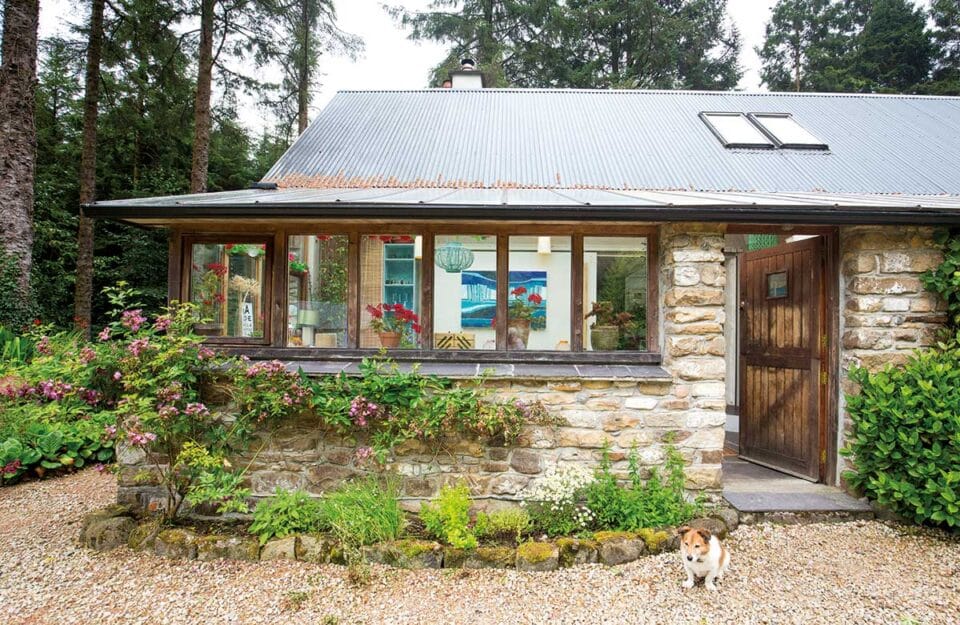Masonry stoves are radiant heaters which deliver most of their heat by direct radiation. Therefore the highest possible output is achieved when the maximum surface area is exposed to the space to be heated. This is why a central location is preferable. A unit can act as a functional space divider between two open areas such as a living room and kitchen. Advantages of masonry stoves include:
- They have one of the highest possible efficiencies that can be achieved burning wood.
- Masonry stoves create almost no wood smoke emissions.
- Properly constructed masonry stoves do not produce creosote.
- They require minimal supervision and maintenance.
- Only one or two fuel loads are sufficient to maintain a comfortable temperature throughout the day.
- Solar passive design is compatible with masonry stoves and heaters can also be connected to the hot water tank.
Stoves with Back Boilers
A stove with a back boiler can be used to supplement an existing heating system or to run all of the heating and hot water. Stainless steel back boilers tend to cost slightly more than steel back boilers but will last longer. Glass lined back boilers will usually last longer again. Clip-in back boilers can be added to a stove at a later date and are available separately. A back boiler can generate up to 45,000 British Thermal Units (BTU).
It is important that there is a heat sink (such as a radiator or hot water tank) next to the stove and above it. There should be two circuits, one gravity fed circuit leading to the hot water tank (the first heat sink) and one pumped circuit for the radiators. This means that even if the pump fails, the heat from the stove boiler can still dissipate into the hot water tank. A pipe thermostat is fitted to the hot water circuit and set to 45 degC so the pump for the radiator circuit only comes on once the hot water has reached 45 degrees.
Boiler stoves vary tremendously according to their size and design with most models starting around the €1,250/£1,000 mark. A clip-in boiler and stove will cost less than a full boiler stove. However the volume of fuel this type of system uses is very large indeed, so before going down this route seek professional advice from a specialist retailer.
Multi function
As the popularity of stoves has increased, so have the options in terms of what they can do in addition to the standard hot water and central heating role. Some stoves now incorporate an oven, others allow for pots and pans to be set on a heating element. In fact, things have almost come full circle back to the days when there was a swee or iron arm with a hook on the end for the pot to sit over an open fire!
Stuart Blakley and with thanks to David Campbell, Chairman of the Northern Ireland Association of Chimney Sweeps www.niacs.co.uk




